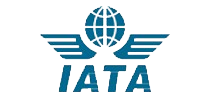Why 3PL Partnerships Are Critical for Scalable Logistics in 2025
In 2025, as global commerce becomes increasingly complex, 3PL partnerships have emerged as a strategic necessity rather than an operational convenience. Businesses aiming for rapid yet sustainable growth must reevaluate their logistics architecture shifting from traditional models to agile, tech-integrated, and scalable supply chain ecosystems. This evolution is no longer optional, and 3PL partnerships stand at the center of this transformation.
Globally, the market size of 3PL partnerships increased from USD 1,065 billion in 2023 to 1,142.7 billion in 2024, which is expected to increase further in 2025.
So let’s explore why 3PL partnerships are now critical to building logistics systems that can grow with demand, adapt with technology, and perform at scale:
The Changing Logistics Landscape
From fluctuating fuel prices to geopolitical tensions and increased consumer expectations for same-day delivery, the logistics industry faces unprecedented challenges. Companies must now manage these uncertainties while ensuring end-to-end visibility, cost control, and fulfillment speed. This demand for flexibility and resilience has driven enterprises to collaborate with third-party logistics providers who offer strategic advantages beyond simple transportation and warehousing.
What Is a 3PL Partnership?
A 3PL partnership refers to a strategic collaboration between a business and a third-party logistics provider responsible for managing specific logistics functions—such as transportation, warehousing, fulfillment, and distribution. Unlike basic outsourcing, a 3PL partnership involves deeper integration with the company’s operations, often leveraging advanced technologies and shared KPIs to drive end-to-end supply chain performance.
Why 3PL Partnerships Matter in 2025
Scaling with Demand Volatility
As seasonal peaks, flash sales, and global sourcing become the norm, businesses require flexible logistics networks that can adapt instantly. 3PL providers bring the ability to quickly expand or reduce warehouse space, transportation capacity, and digital tools as needed—making it easier for companies to respond to sudden changes in demand. This adaptability is no longer a luxury—it's a strategic necessity. In fact, recognizing the growing importance of flexible logistics, many enterprises are formalizing partnerships with third-party providers. According to a report published in 2022, 60% of Fortune 500 companies have at least one 3PL contract, and the trend is steadily increasing.
Unlocking Specialized Expertise and Strategic Optimization
Beyond managing day-to-day logistics, 3PL partners bring deep industry knowledge and proven methodologies to streamline complex supply chain processes. They offer tailored solutions like SKU-level inventory planning, compliance management, reverse logistics, and demand forecasting—services that go beyond basic transportation and warehousing. This strategic layer of support enables businesses to optimize operations, avoid common pitfalls, and make informed decisions backed by real-time insights and performance data.
Accelerating Technology Integration
With advancements like AI-powered tracking, IoT-enabled fleet management, and predictive logistics, 3PL providers are at the forefront of logistics tech. Partnering with them enables businesses to experience 3PL integration benefits without the cost and complexity of building in-house systems—ensuring faster deployment and continuous innovation.
Driving Cost and Risk Optimization
3PL partnerships reduce fixed investments in warehousing, fleet ownership, and labor. At the same time, they help businesses mitigate risks such as port disruptions, regulatory changes, or last-mile delivery failures. Their multi-location distribution networks and global compliance expertise make them a key pillar of cost-effective supply chain models.
The DWWLG Approach to Scalable Logistics
Dynamic Worldwide Logistics Group (DWWLG) offers more than traditional logistics outsourcing. With its data-driven operational model, global distribution hubs, and AI-enabled decision-making systems, DWWLG supports companies in transforming their logistics into a competitive advantage.
From seamless 3PL integration benefits to round-the-clock freight monitoring, DWWLG is aligned with the market demand for cost-effective supply chain models. Whether it's e-commerce fulfillment, intermodal freight, or temperature-controlled logistics, DWWLG’s capabilities are geared toward high-performance execution at scale.
Technology Is Shaping the Future of Logistics
Beyond partnerships alone, technology is redefining how logistics operates on a global scale. Real-time tracking, predictive analytics, API integrations, and robotics are no longer optional—they're becoming foundational to competitive logistics strategies in 2025. Third-party logistics providers are leading this transformation, making technology more accessible to businesses of all sizes through scalable platforms and plug-and-play integrations.
3PL partnerships with technologically advanced providers ensure that logistics is not just a backend function, but a forward-looking strategy contributing to customer satisfaction and brand growth.
Key Benefits of a 3PL Partnership
Cost Optimization – Minimized capital expenditure on warehouses, labor, and transport fleet
Geographical Reach – Access to global and regional fulfillment centers
Expertise Access – Knowledge in customs compliance, reverse logistics, and SKU management
Data-Driven Decisions – AI-powered demand forecasting and supply chain modeling
Risk Mitigation – Fast response to disruptions like port closures or raw material delays
Cost Efficiency Comparison
Illustrative Cost Efficiency Index: In-House vs. 3PL Logistics (2023–2025)
Note: lower index indicates higher cost efficiency
Note: This chart is a representative example to illustrate the potential cost-saving trajectory for businesses shifting from in-house logistics to a 3PL partnership—such as with Dynamic Worldwide Logistics Group (DWWLG). While actual results vary by industry and company size, the trend demonstrates how strategic 3PL integration typically leads to reduced logistics expenses over time.
Insight: As in-house logistics struggle with growing costs due to infrastructure, labor, and market volatility, many companies experience improved efficiency and reduced spending when switching to a scalable 3PL model. Providers like DWWLG contribute to this shift through operational optimization and tech-enabled solutions.
Integrating 3PL into Your Supply Chain
To unlock the full potential of a 3PL partnership, businesses must:
Identify Core Logistics Needs – Pinpoint pain points like last-mile delivery, fulfillment, or returns.
Evaluate Tech Compatibility – Ensure the 3PL system integrates with ERP, CRM, and WMS platforms.
Set SLAs and KPIs – Establish clear performance benchmarks and escalation protocols.
Invest in Relationship Management – Treat the 3PL as a strategic partner, not just a vendor.
Conclusion
In 2025, 3PL partnerships are a cornerstone of a modern, responsive, and scalable logistics ecosystem. Businesses that embrace this model can expect improved agility, enhanced visibility, lower costs, and a competitive edge.
Dynamic Worldwide Logistics Group is at the forefront of this shift, helping clients reimagine their logistics strategies with precision, performance, and future-focused technology. As supply chains evolve, DWWLG continues to drive transformation for businesses worldwide.
Discover how 3PL solutions can power growth and resilience in your supply chain.
BOOK A MEETING
FAQs
Q1: How do 3PL partnerships differ from logistics outsourcing?
A: While logistics outsourcing focuses on reducing cost or offloading tasks, a 3PL partnership is a collaborative model built on shared goals, real-time integration, and long-term scalability.
Q2: What industries benefit most from 3PL in 2025?
A: Industries like e-commerce, healthcare, automotive, electronics, and food & beverage rely heavily on 3PL providers to manage complex logistics efficiently.
Q3: Can small businesses afford to work with a 3PL partner?
A: Yes. Many 3PLs offer flexible, budget-friendly plans that give small businesses access to professional logistics without heavy upfront costs.
Q4: How do 3PL providers ensure visibility and control over shipments?
A: Leading 3PL providers use advanced TMS (Transportation Management Systems), real-time tracking tools, and centralized dashboards that give businesses full visibility over shipments, inventory levels, and delivery timelines.
Q5: What should companies look for when choosing a 3PL partner?
A: Businesses should evaluate a 3PL provider’s tech capabilities, industry expertise, network reach, data security protocols, service-level agreements (SLAs), and flexibility in scaling with business growth.



















